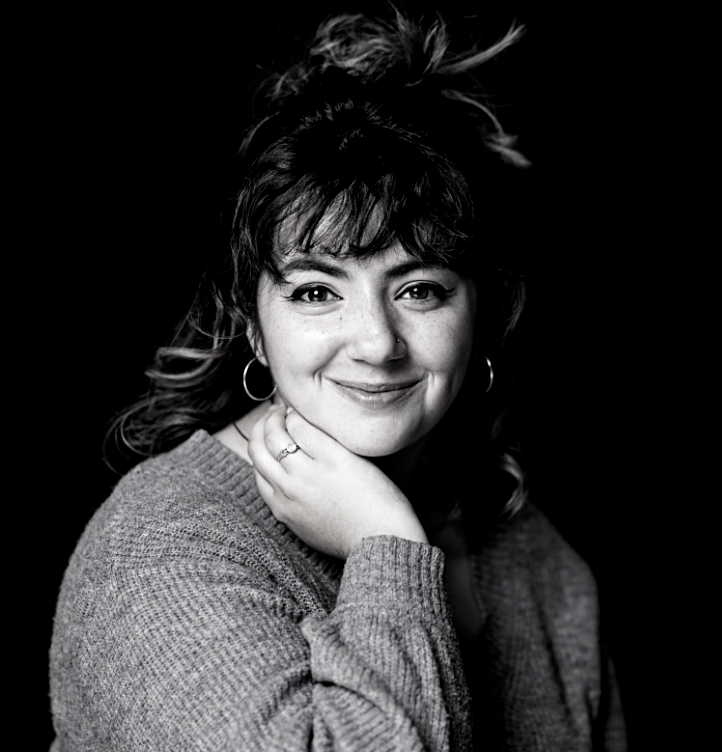REVIEW: 1939 finds tremendous power in the things left unspoken
Content warning: This review contains descriptions of residential schools and abuse toward Indigenous children.
What makes a great play?
Is it the characters, sent into a vortex of plot with nothing to guide them but their given circumstances? Or is it the plot itself, a tangle of coincidences that leads to a gripping, torturous climax? Perhaps it’s the dialogue of the play, the tightenings of language that provide context for the work’s setting?
What if, as is the case in the devastating and understated 1939, it’s the silences? It seems strange to conclude that 1939’s brilliance comes from the children we don’t meet, the acts we don’t witness, or the words we don’t hear.
But that’s exactly what makes 1939 so vital.
Jani Lauzon’s production, now playing at Canadian Stage, paints a sharp portrait of a fictional residential school, but uses wide swathes of negative space to its advantage. When we meet the Indigenous students tasked with performing All’s Well That Ends Well for an upcoming visit from King George VI, they look like dolls, plastic playthings dressed in uniform denims and beiges. The girls sport matching haircuts; the boys ache from long hours of farm work and other manual labour. When the children speak, they do so in short, clipped sentences, not daring to shatter the illusion of assimilation that’s kept them in the school’s good graces.
It’s soon made clear that these students — four girls and two boys — are at the top of their class, the only children who can be trusted to represent the residential school for an audience. These are the students who won’t ask visitors for help, or try to run away in the dead of night. Thanks to the school’s teachings, these children, stripped of their languages and families, are broken; or, at the very least, broken-in.
And so goes 1939, which, despite its premise, could conceivably be billed as a comedy, albeit a grim one. Lauzon and co-playwright Kaitlyn Riordan pepper their residential school with frequent moments of levity, and indeed, the play is often funny: Father Williams, the school’s priest (Nathan Howe), is often the butt of the joke, and beleaguered Welsh teacher Ms. Ap Dafydd (Catherine Fitch) frequently shepherds laughter into her classroom, whether she realizes it or not.
And the students, too, delight in giggles when no one’s listening, even the militantly studious Beth (a standout Grace Lamarche). When Ms. Ap Dafydd and Father Williams leave the room, suddenly there’s room to remember how things are back home — it’s particularly compelling to watch Evelyne (Merewyn Comeau) reconnect with her grandfather’s spiritual teachings, and to root for Joseph (Richard Comeau) as he tries to reach out to his sister.
But indeed, some of 1939’s most haunting messages come from the things we don’t see, from the lashings that led to the scar on Susan (Brefny Caribou)’s shoulder to the cataclysmic liminality of Jean (John Wamsley)’s Métis identity. 1939 never tells you how the students are feeling: It shows you. The play trusts its audiences to fill in gaps and make connections, and it overwhelmingly succeeds; even its title is a provocation to consider what looming global events the British monarchy might have been preoccupied with that year, rather than the needs and implications of residential schools in Northern Ontario.
Part of the production’s success comes from ever-sharp aesthetic choices — three chalkboards serve as an agora for the unspoken, a shared record of how the students are thinking and feeling. When adults erase these notes, written in impeccable, period-appropriate cursive, it’s as if the pain behind them disappears, too. But of course, that bruise isn’t gone — it’s just been pushed to the side. (As well, those chalkboards make the Berkeley Street Theatre feel much more intimate than usual, which adds a welcome dose of proximity to the story at the heart of 1939.)
Wayne Kelso’s sound design and original music further suggest the world of 1939, a cluttered mosaic of anger and regret. When a children’s choir begins to sing, out-of-tune and yet perfectly in sync, it’s as if we’re being asked to mourn for the lives onstage, the futures ripped from these fictional lives in pursuit of stamping out Indigenous culture. The ache is palpable.
But then, of course, a fart joke comes along, or a play-within-a-play with costumes so ridiculous you can’t help but laugh (kudos to costume designer Asa Benally). Not once does 1939 let you linger in any one feeling for too long: Yes, of course, there’s darkness and agony. But there’s lightness, too, and love, lots of it.
1939 seems an overdue addition to the Canadian dramatic canon, and if all is right in the world, this piece will soon appear in more theatrical seasons across the country. Not many plays could make such magic of the things left unspoken, but then again, not many plays have as dynamo a duo as Lauzon and Riordan holding the pen.
1939 runs at Canadian Stage until October 12 and at the Belfry Theatre from October 29 until November 24. Tickets are available here (Canadian Stage) and here (Belfry).
Intermission reviews are independent and unrelated to Intermission’s partnered content. Learn more about Intermission’s partnership model here.















This is a very perceptive review. I couldn’t believe how much I laughed at a play about a Residential School, but then I did cry too. I highly recommend this production.